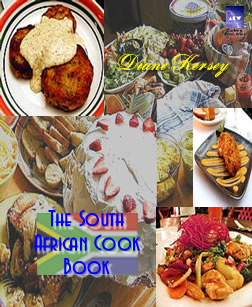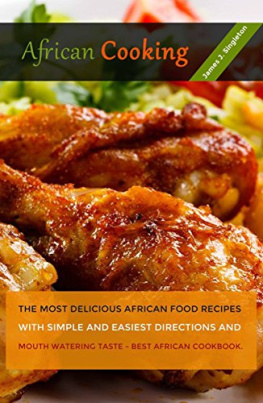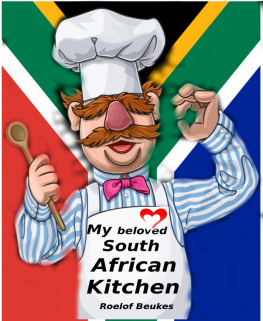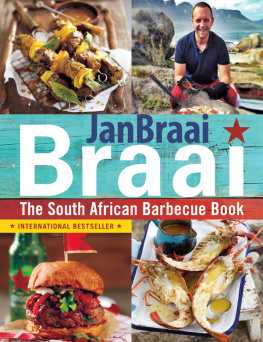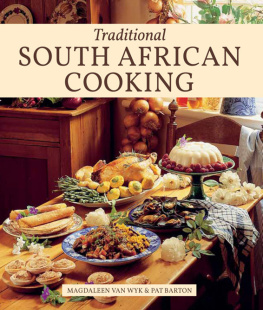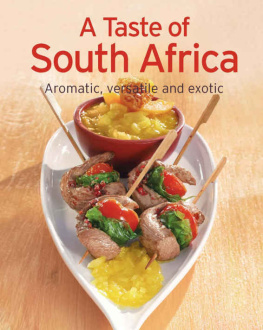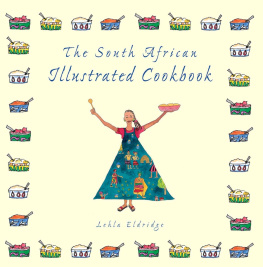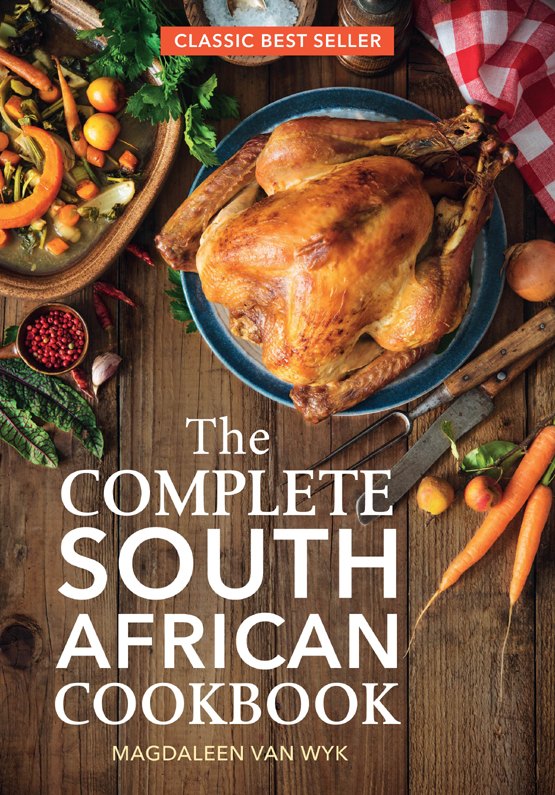




Struik Lifestyle (an imprint of Penguin Random House (Pty) Ltd) Company Reg. No. 1953/000441/07 The Estuaries, 4 Oxbow Crescent, Century Avenue, Century City 7441 PO Box 1144, Cape Town, 8000, South Africa First published (for CNA) in 1980 by Struik Publishers Second edition published in 1993 Third edition published in 2002 Fourth edition published in 2018 Reprinted in 2003, 2004 (twice), 2005, 2007, 2008, 2009, 2010, 2011, 2012, 2014 Copyright in published edition: Penguin Random House (Pty) Ltd 1980, 1993, 2002, 2018 Copyright in text: Magdaleen van Wyk 1980, 1993, 2002, 2018 Copyright in illustrations: Penguin Random House (Pty) Ltd 1980, 1993, 2002, 2018 Copyright in cover image: iStock.com/AlexRaths 2018 Copyright in spine and back cover images: Penguin Random House (Pty) Ltd/Sean Calitz 2018 All rights reserved. No part of this publication may be reproduced, stored in a retrieval system or transmitted, in any form or by any means, electronic, mechanical, photocopying, recording or otherwise, without the prior written permission of the publishers and the copyright holders. Publisher: Linda de Villiers Cover design: Beverley Dodd Page design: Wim Reinders Line sketches: Nicci Page Cover photograph: Alex Raths Reproduction: Hirt & Carter Cape (Pty),Ltd ISBN 978-1-43230-983-1
Note: Meat charts on pp. adapted with the permission of the Meat Board.
The idea for a book such as this has been at the back of my mind for a long time: one that would present the basic principles of cookery and that would cater for South African tastes. From the start I envisaged a comprehensive, up-to-date household companion that would meet the needs of beginners as well as experts, of traditionalists as well as of the adventurous, of vegetarians as well as of meat-eaters. In view of this, simplicity, economy and South African eating habits were my guidelines in making the selection. My initial selection ran to over a thousand recipes, and perhaps the most difficult task was to decide what to leave out. In the end I chose some 650 recipes, all of them tested and many of them firm favourites, and added many variations. I offer them here in the hope that this book will be both practical and exciting.
While my original idea seemed simple enough, its execution was so complex that without the help and advice of a great number of people, mine would have been an impossible task. But one person, above all others, deserves my special thanks: Pat Barton, who helped to weed out, check and recheck the ingredients, who undertook the demanding task of typing it all out and then read the proofs. At every step, she was there providing support and encouragement. MAGDALEEN VAN WYK Stellenbosch, 1979 TABLE OF CONTENTS At first glance, to those of us who grew up in the age of imperial measures, metricised quantities for ingredients in recipes may look strange, but all that has changed is that the volume of liquids and dry ingredients is now expressed directly in units of volume (millilitres and litres) instead of by using special unit names such as teaspoon (tsp), tablespoon (Tbsp), cup (C) and so on. In this book, all liquids are given in millilitres (ml) and litres. Small quantities of dry ingredients are also given in millilitres (see conversions below).
Quantities of dry ingredients large enough to be weighed are given in grams.
NOTE: At the time this book was written, 12.5 ml was the accepted conversion of 1 Tbsp. However, many modern measuring spoons equal 15 ml. Bear this in mind when preparing the recipes in this book, and adjust quantities as necessary.
Use a reliable kitchen scale to weigh larger quantities of dry ingredients and such things as meat, fish and poultry. Measuring cups for dry ingredients are available in sets of four volumes: 25 ml, 50 ml, 100 ml and 250 ml.
To measure dry ingredients with these measuring cups, scoop up a cupful, taking care not to press the contents tightly into the measure, then scrape the top with the edge of a knife to level it. Measuring spoons with a level volume of 1 ml, 2 ml or 2.5 ml, 5 ml and 12.5 ml or 15 ml respectively are used to measure small quantities of both dry and liquid ingredients. Use a transparent ovenproof glass or plastic measuring cup, graduated from 50 ml to 250 ml in 10 ml divisions, for measuring liquids only. Remember to read off the correct amount at eye-level, not from the top. 


| tsp | = | 1 ml |
| tsp | = | 2 ml |
| 1 tsp | = | 5 ml |
| 2 tsp | = | 10 ml |
| 3 tsp | = | 15 ml |
| 4 tsp | = | 20 ml |
| C | = | 60 ml |
| C | = | 125 ml |
| C | = | 190 ml |
| 1 Tbsp | = | 12.5 ml |
| 2 Tbsp | = | 25 ml |
| 3 Tbsp | = | 37.5 ml |
| 4 Tbsp | = | 50 ml |
| 5 Tbsp | = | 62.5 ml |
| 6 Tbsp | = | 75 ml |
| 1 C | = | 250 ml |
| 2 C | = | 500 ml |
| 3 C | = | 750 ml |
Note: Metric quantitites, both ml and g, are NOT exact equivalents of the imperial measurements but have been adjusted so that they can be gauged with modern kitchen measures.
| 100 kPa | = | 15 lbs pressure per square inch |
| 70 kPa | = | 10 lbs pressure per square inch |
| 35 kPa | = | 5 lbs pressure per square inch |
Approximate mass and volume equivalents of recipe ingredients


 Note:
Note: Reprinted with the permission of the South African Bureau of Standards.
The following abbreviations and symbols are used in this book:
| kg | = | kilogram |
| g | = | gram |
| mg | = | milligram |
| ml | = | millilitre |
| cm | = | centimetre |
| mm | = | millimetre |
| tsp | = | teaspoon(s) |
| kPa | |



